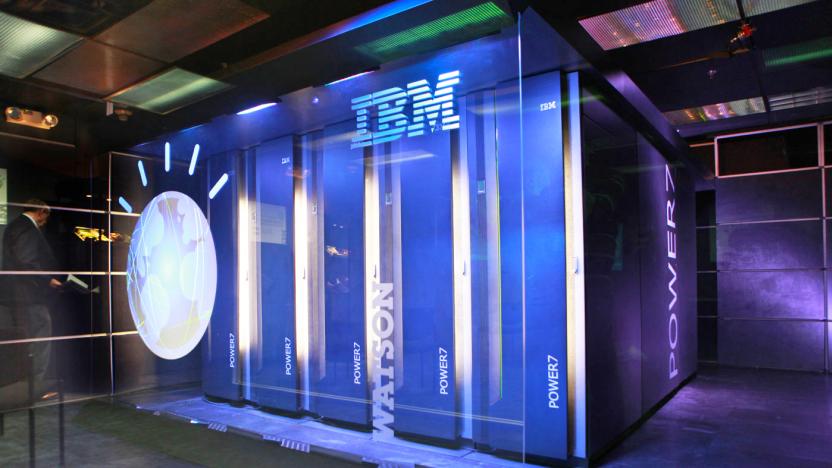atp
Latest

Netflix greenlights a tennis docuseries from the 'Drive to Survive' team
It might feature the ongoing Novak Djokovic saga.

Amazon Prime's sports streaming expands with more ATP tennis
Like other streaming services, Amazon has been hunting for sporting events to feature on its Prime Video platform. Earlier this year, the company took over NFL Thursday game livestreaming from Twitter. Today, the company announced it's snagged rights for a string of tennis matches. Amazon Prime owners in the UK and Republic of Ireland will have access to 37 Association of Tennis Professionals (ATP) events from 2019 to 2023, while US owners get access to ATP's streaming service, Tennis TV.

Amazon snatches ATP tennis rights from Sky
After winning numerous awards for its TV and movie originals, Amazon has set its sights on adding coverage of various popular sporting events to its Prime subscription. In the US, the company has already wrestled Thursday-night NFL game streams away from Twitter, but has been slow to lock in similar deals on the other side of the Atlantic. According to The Guardian, Amazon has now finally made a move, outbidding Sky and ITV to secure the UK rights to tennis' ATP World Tour for the next five years.

Scientists built a book-sized, protein-powered biocomputer
Supercomputers are absurdly impressive in terms of raw power, but it comes at a price: size and energy consumption. A multi-university team of researchers might've sidestepped that, though, with protein-powered biocomputers. Lund University notes that where this should really be helpful is with cryptography and "mathematical optimization" because with each task it's necessary to test multiple solution sets. Unlike a traditional computer, biocomputers don't work in sequence, they operate in parallel -- leading to much faster problem solving.

Biological computer can decode images stored in DNA chips, applications remain unclear
Scientists from the Scripps Research Institute and Technion–Israel Institute of Technology have taken biological computing one step further, with a new molecular machine capable of decoding images stored on a DNA chip. Though it's referred to as a "biological computer," the researchers' machine isn't much like a CPU at all -- unless your CPU was manufactured in a test tube filled with a smoothie of DNA molecules, enzymes and ATP. Once they found the right mix, the team proceeded to encrypt images on a DNA chip and used their Turing machine-like creation to decode them, with fluorescent stains helping to track its progress. The above image, read from left to right, gives a more literal idea of what the system can do -- basically, it takes a hidden image and extracts a given sequence. Storing data on DNA isn't anything new, but decrypting said data in this fashion apparently is. The applications for this kind of organic computing remain a bit fuzzy, but it's pretty clear that whatever follows probably won't look anything like a typical computer. The team's findings were recently published in a paper for the journal Angewandte Chemie, the abstract for which is linked below. For a slightly more readable explanation, check out the full press release after the break.

ATP PhotoFinder Pro loses the base station, takes us to geotagging nirvana
Despite new cameras being riddled with borderline useless features and modes, useful functionality like automatic geotagging is getting little love from the big players. All the more reason for third parties to sneak in and make a few bucks, and ATP certainly seems to be on top of it. We liked the idea of the company's PhotoFinder, but that base station looked like needless desk clutter. The new PhotoFinder Pro does away with it, featuring an integrated SD, Memory Stick, and MMC card reader. Just sync up the clock in the unit with that of your shooter, clip it onto your camera bag for a day of scenic photography, and then pop your card in before downloading the pics that night. It'll automatically add coordinates to each photo's EXIF information, drastically reducing the likelihood of future spousal arguments about the whereabouts of certain Kodak moments. That sounds like a beautiful thing, and at $119 a good deal, too. Update: Dan commented to point out that, with the help of an external USB card reader, the PhotoFinder Pro can also tag pics on CF, xD, or any other FAT/FAT32 formatted cards you might have sliding around in the bottom of your junk drawer. [Via Photography Blog]

ATP PhotoFinder mini geotagger doesn't require software
Most of the geotaggers we've seen have written location data to your photos using some fancy software on your machine after you've pulled images off your camera, but ATP's PhotoFinder mini moves the tagging step backwards in the process, writing geodata directly to images on your memory card. Like similar devices, the PhotoFinder mini records timelogged GPS data from a SiRF Star III chip while you shoot -- but when you're done, you insert your card into a base station, which tags your images using their EXIF timestamps. Sounds like a much simpler system than relying on third-party software to integrate with your photo-management apps -- we just wish the dock was also a card reader, which would make this a one-step process. No pricing info yet, but if this thing is reasonable, it'll certainly be tempting.[Via Photography Blog, thanks Mark]

ATP's GPS Photo Finder geotags your pix OTG
If you're heavy into geotagging -- and we think you are -- you may want to look into an interesting new product from ATP (no relation to the multifunctional nucleotide of the same name) called the GPS Photo Finder, a unique device which automatically tags your digital pictures with latitude and longitude, without the need for a PC nearby. The little rectangular box works by reading SD, MMC or Memory Stick data and then tagging pictures on the media with location coordinates (as long as your camera is synced to the clock of the Photo Finder). The internal 128MB of memory allows for roughly 550 hours of tracking, and the pictures / GPS data can be read by any application capable of handling geotagged images (such as Picasa). The device is scheduled for mass release in the first quarter of 2008, no word on price right now.[Via Coolest Gadgets]

Forget weather-proof memory cards, let's try "nuke-able"
The folks at e-Fotografija have had enough of SDHC speed tests, and wanted to take things to the next level. After some extreme temperature tests (ranging from -30°C to +85°C) which seemed to do little to knock the cards out of commission -- though Kodak card did have to return to room temperature before restarting, while the industrial-grade ATP card kept right on humming -- the cards were blasted with Gamma radiation to really get the measure of the things. Sadly, no strange half-man, half-SD card creatures were created in the process, and in fact, high doses of radiation did absolutely nothing to impact the cards, meaning the relatively weak level of airport X-ray radiation should do nothing to your stash of pictures stored on these sturdy memory cards. Tune in next weak, when we'll find out if SD cards can pass through the core of the earth unscathed.[Via PhotographyBLOG]

ATP intros 4GB ProMax MMCplus HC flash card
While the NAND-based MMCplus format hasn't exactly reached SD status in terms of universal acceptance and recognition, ATP is unveiling a 4GB high capacity (HC) flavor to level up with its 4GB ProMax SDHC card. It sports a speed rating of 166x (25MB per second) and was designed to "maximize the performance of next generation digital devices requiring larger capacities and higher transfer rates" such as quick-shooting DSLRs. The card is also resistant to "water and extreme temperatures," but similar to shoving an SDHC card into an SD-only reader, the HC format can't be utilized by earlier MMCplus readers. Unsurprisingly, pricing and release information isn't readily available, but you'll probably see these in memory shops soon.







